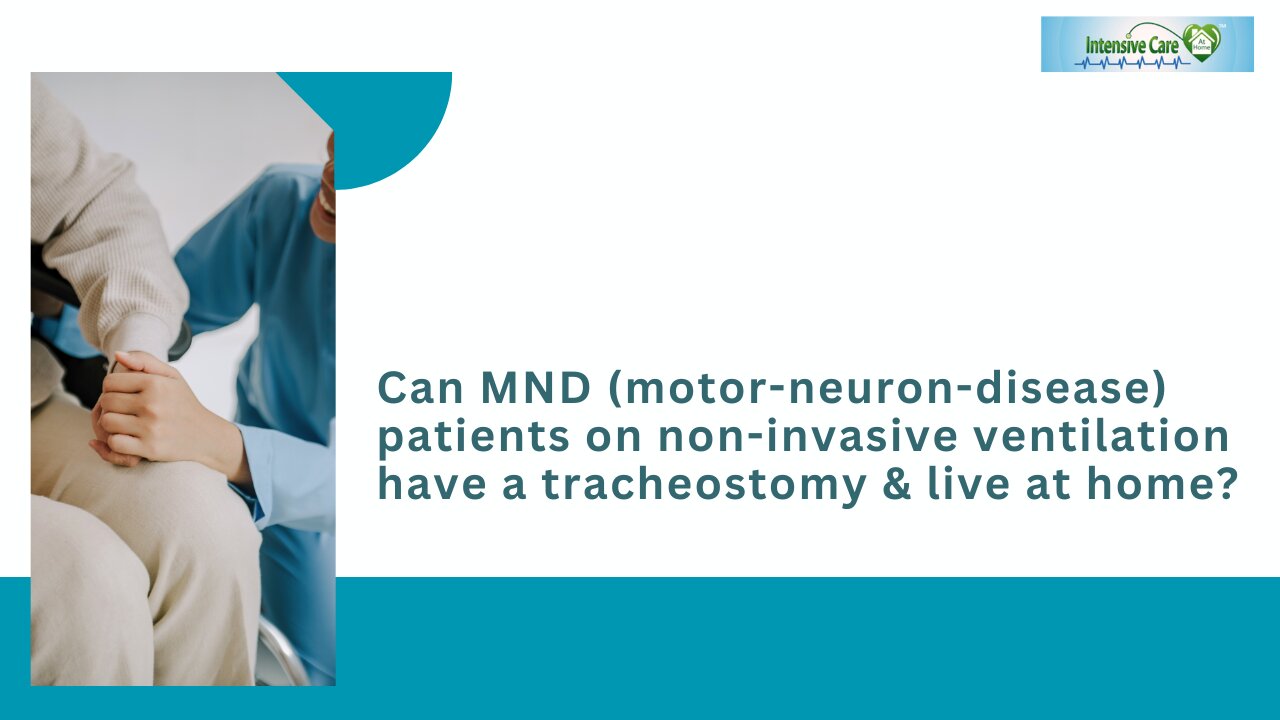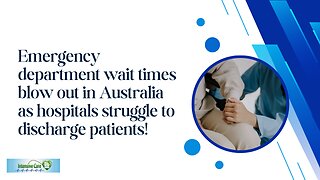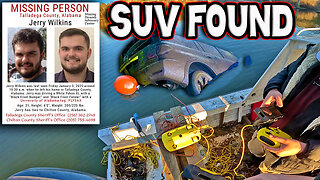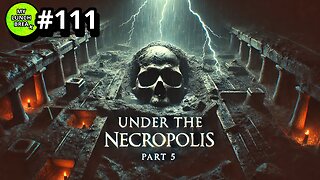Premium Only Content

Can MND(Motor-Neuron-Disease) Patients on Non-Invasive Ventilation have a Tracheostomy&Live at Home?
Can MND(Motor-Neuron-Disease) Patients on Non-Invasive Ventilation have a Tracheostomy&Live at Home?
Book your free 15-minute phone consultation here
http://intensivecarehotline.com/scheduling-appointment/
Call directly 24/7
+1 415-915-0090 USA/Canada
+44 118 324 3018 UK
+6141 094 2230 Australia
Email support@intensivecarehotline.com
Get 1:1 consulting and advocacy
1:1 phone counselling
http://intensivecarehotline.com/one-on-one-counselling/
Become a member for families of critically ill Patients in Intensive Care
https://intensivecarehotline.com/intensivecaresupport-org-membership/
Immediate action steps http://intensivecarehotline.com/take-control-take-charge/immediate-action-steps/
https://intensivecareathome.com
And if you need a medical record review, click on the link and we can help you with reviewing your loved one’s medical records while they’re in ICU.
https://intensivecarehotline.thrivecart.com/review-of-medical-records/
Facebook Page: https://www.facebook.com/ICUhotline
Twitter: https://twitter.com/icuhotline
Song: Jarico - Island Music
supported by@FreeBackgroundMusicForCreators
#BackgroundMusicWithoutLimitations
https://bit.ly/2XoXFnb
#icu
#intensivecare
#criticalcare
Hi, it’s Patrik Hutzel from intensivecareathome.com where we provide tailor-made solutions for long-term ventilated adults and children with tracheostomies at home, and where we also provide tailor-made solutions for hospitals and intensive care units at home whilst providing quality care for long-term ventilated adults and children with tracheostomies at home, otherwise medically complex adults and children at home, which includes Home BIPAP (Bilevel Positive Airway Pressure), Home CPAP (Continuous Positive Airway Pressure), home tracheostomy care for adults and children that are not ventilated, Home TPN (Total Parenteral Nutrition), home IV potassium infusions, home IV magnesium infusions, as well as home IV antibiotics. We also provide port management, central line management, PICC (Peripherally Inserted Central Catheter) line management, as well as Hickman’s line management, and we also provide palliative care services at home.
We’re also sending our critical care nurses into the home for emergency department bypass services, and we have done so as part of a program at the Western Sydney Local Area Health District, their in-touch program, saving approximately $2,000 per patient that we could keep at home instead of going to ED.
Now, today, I actually want to talk about a conference that I went to last week, I actually went to the Sleep DownUnder conference, which is basically the Australian sleep apnea and respiratory conference.
Now, one might wonder, what does Intensive Care at Home doing at the sleep apnea conference? Well, the bottom line is that there’s a lot of patients with sleep apnea that have complex disability and complex medical conditions, which is obviously a patient population that we can help, and that’s why it was a very good conference with a lot of insights, but also with a lot of good networking.
On Friday, there was a breakfast session sponsored by ResMed and done by the Victorian Respiratory Support Service, the VRSS, which is the statewide program caring for over 1,400 patients on home ventilation based out of the Austin Hospital in Melbourne.
In the session, Dr. Anna Ridgers, Sleep and Respiratory Physician presented a practical guide to initiating and managing long-term ventilation. Topics include the device selection optimizing NIV therapy with case studies, remote telemonitoring for long-term patient care and transitioning from pediatric to adult ventilation was a very good presentation.
One of the questions that I had at the end of the presentation, once Dr. Ridgers went through what type of noninvasively ventilated patients the VRSS is supplying equipment to, especially when it comes to MND (Motor Neuron Disease) patients, whether some of them would have a tracheostomy?
The answer was that not many of them can have a tracheostomy because of lack of services in the community. I say that is not accurate and that is not true because we have looked after a number of MND (Motor Neuron Disease) clients at home with a tracheostomy. We are still looking after MND clients at home in the community with the tracheostomy.
It was sort of brushed off saying, “Well, it’s too difficult to get any support for them.” Well, again, that is not accurate with Intensive Care at Home. It is definitely possible to look after MND patients with the tracheostomy at home with 24-hour nursing care that is NDIS-funded.
Continue reading at: https://intensivecareathome.com/can-mnd-motor-neuron-disease-patients-on-non-invasive-ventilation-have-a-tracheostomy-live-at-home/
-
 24:44
24:44
Intensive Care at Home
15 days agoEmergency Department Wait Times Blow Out in Australia as Hospitals Struggle to Discharge Patients!
51 -
 11:00:11
11:00:11
tacetmort3m
1 day ago🔴 LIVE - SOLO RANK GRINDING CONTINUES - MARVEL RIVALS
155K3 -
![Shadows Of Chroma Tower, Alpha Playtest [Part 1]](https://1a-1791.com/video/fwe2/1d/s8/1/5/Q/U/n/5QUnx.0kob-small-Shadows-Of-Chroma-Tower-Alp.jpg) 13:29:21
13:29:21
iViperKing
21 hours agoShadows Of Chroma Tower, Alpha Playtest [Part 1]
133K6 -
 54:05
54:05
TheGetCanceledPodcast
18 hours ago $13.31 earnedThe GCP Ep.11 | Smack White Talks Smack DVD Vs WorldStar, Battle Rap, Universal Hood Pass & More...
124K20 -
 13:37
13:37
Exploring With Nug
22 hours ago $8.39 earnedSUV Found Underwater Searching For Missing Man Jerry Wilkins!
84.5K4 -
 2:58:21
2:58:21
xBuRnTx
17 hours ago1st Warzone Stream Online
88.8K10 -
 6:10:21
6:10:21
JdaDelete
1 day ago $22.78 earnedDino Crisis - Sega Saturday
156K6 -
 23:22
23:22
MYLUNCHBREAK CHANNEL PAGE
1 day agoUnder The Necropolis - Pt 5
122K60 -
 2:26:11
2:26:11
Jewels Jones Live ®
2 days agoWINNING BIGLY | A Political Rendezvous - Ep. 108
173K51 -
 2:04:49
2:04:49
Bare Knuckle Fighting Championship
4 days agoBKFC FIGHT NIGHT MOHEGAN SUN FREE FIGHTS
94.1K7